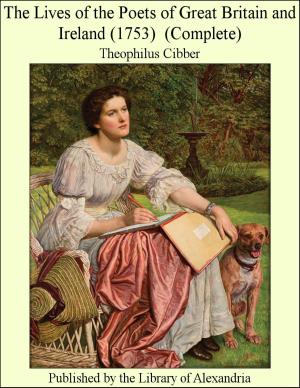A Study of The Textile Art In Its Relation To The Development of Form and Ornament Sixth Annual Report of the Bureau of Ethnology to the Secretary of the Smithsonian Institution, 1884-'85
Nonfiction, Religion & Spirituality, New Age, History, Fiction & Literature| Author: | William Henry Holmes | ISBN: | 9781465547972 |
| Publisher: | Library of Alexandria | Publication: | March 8, 2015 |
| Imprint: | Language: | English |
| Author: | William Henry Holmes |
| ISBN: | 9781465547972 |
| Publisher: | Library of Alexandria |
| Publication: | March 8, 2015 |
| Imprint: | |
| Language: | English |
TEXTILE ART IN ITS RELATION TO THE DEVELOPMENT OF FORM AND ORNAMENT. By William H. Holmes. The textile art is one of the most ancient known, dating back to the very inception of culture. In primitive times it occupied a wide field, embracing the stems of numerous branches of industry now expressed in other materials or relegated to distinct systems of construction. Accompanying the gradual narrowing of its sphere there was a steady development with the general increase of intelligence and skill so that with the cultured nations of to-day it takes an important, though unobtrusive, place in the hierarchy of the arts. Woven fabrics include all those products of art in which the elements or parts employed in construction are largely filamental and are combined by methods conditioned chiefly by their flexibility. The processes employed are known by such terms as interlacing, plaiting, netting, weaving, sewing, and embroidering. The materials used at first are chiefly filiform vegetal growths, such as twigs, leaves, roots, and grasses, but later on filiform and then fibrous elements from all the kingdoms of nature, as well as numerous artificial preparations, are freely used. These are employed in the single, doubled, doubled and twisted, and plaited conditions, and are combined by the hands alone, by the hands assisted by simple devices, by hand looms, and finally in civilization by machine looms
TEXTILE ART IN ITS RELATION TO THE DEVELOPMENT OF FORM AND ORNAMENT. By William H. Holmes. The textile art is one of the most ancient known, dating back to the very inception of culture. In primitive times it occupied a wide field, embracing the stems of numerous branches of industry now expressed in other materials or relegated to distinct systems of construction. Accompanying the gradual narrowing of its sphere there was a steady development with the general increase of intelligence and skill so that with the cultured nations of to-day it takes an important, though unobtrusive, place in the hierarchy of the arts. Woven fabrics include all those products of art in which the elements or parts employed in construction are largely filamental and are combined by methods conditioned chiefly by their flexibility. The processes employed are known by such terms as interlacing, plaiting, netting, weaving, sewing, and embroidering. The materials used at first are chiefly filiform vegetal growths, such as twigs, leaves, roots, and grasses, but later on filiform and then fibrous elements from all the kingdoms of nature, as well as numerous artificial preparations, are freely used. These are employed in the single, doubled, doubled and twisted, and plaited conditions, and are combined by the hands alone, by the hands assisted by simple devices, by hand looms, and finally in civilization by machine looms















